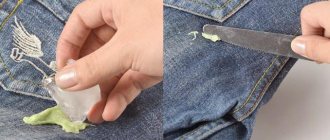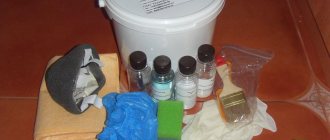Disinsection is any activity aimed at exterminating insects. If an apartment is infested with bedbugs, a characteristic unpleasant odor appears in it, which is absorbed into various materials: upholstered furniture, textiles, carpets, curtains, clothes and other personal items, wallpaper, floor coverings. The use of insecticides adds color to the aromatic picture. Although many manufacturers try to make bedbug chemicals less odorous, caustic, and toxic, this is not always successful. After treating a room for bed bugs, a specific smell remains. It can be very persistent, and sometimes getting rid of the smell is more difficult than getting rid of pests.
The smell after disinfestation remains both after the work of professional exterminators and after using the products yourself. All drugs consist of chemicals that have their own aroma or acquire it in combination with other ingredients. Sometimes manufacturers add a fragrance, which is designed to mask the own unpleasant odor of the drugs.
Cheap bedbug baiting agents usually smell bad and pungent. To reduce the cost of such products, manufacturers do not work on the aromatic component. In addition, products from this price category do not contain the most effective and high-quality active ingredients, which require an increased concentration of the working solution to work. Because of this, their smell is stronger. Many products have been used for several decades, that is, they were developed for a very long time, since then science and production have moved far forward, but these drugs have remained at the same level. They are effective, but, unfortunately, toxic.
Newer insecticidal products smell less. Manufacturers even say about some of them that they are odorless. But their cost is significantly higher. But efficiency does not always have the same correlation.
Attention: under no circumstances should you inhale chemical insecticides or sniff the anti-bedbug product in the bottle, even if it is written on it that it is odorless. You can get a burn to the mouth, larynx, and nasal mucosa. It can also lead to breathing and digestive problems. If you have asthma or breathing problems, inhaling the insecticide can be very dangerous and even fatal.
What is it and what is it for?
Dichlorvos is a popular insecticide used to get rid of flying and crawling insects. Used in home and industrial environments.
The composition contains organophosphorus compounds that pose a particular danger to human health. Currently, more gentle chemicals are used to produce dichlorvos, but the risk of poisoning with such a product remains high.
The insecticide has some positive qualities, which makes the substance popular among many people.
Advantages:
- Quick effect on all types of harmful insects,
- Causes poisoning of parasites when ingesting or inhaling the toxin,
- When used correctly, it is low toxic to animals and people,
- Decomposes well in the environment,
- Does not pose a danger to plants.
The disadvantage of dichlorvos is the inability to stay indoors for a long time after treatment.
There are quite a few products on sale with the name “Dichlorvos” and additional prefixes – “Super”, “Neo”. Such chemicals do not contain phosphorus compounds; they contain permethrin and its derivatives, so insecticides have a third class of hazard and are low-toxic.
However, the use of such tools requires the same careful attention. In children and small animals, poisoning occurs faster than in adults. Due to low weight, a high dosage of the toxin acts more intensely.
Principle of action on various insects
Dichlorvos belongs to the class of organophosphorus compounds. These substances are extremely toxic to humans, animals and insects.
The cockroach died
The advantages of these connections:
- high insecticidal activity;
- quickly decompose to compounds that are safe for humans;
- do not accumulate in mammalian tissues and are quickly excreted;
- efficiency;
- speed of action.
Disadvantages of organophosphorus compounds:
- resistant populations;
- toxic to mammals, including humans, and fish.
Toxicity
Insecticides of this group have a neuroparalytic effect. That is, when it enters the body, the transmission of nerve impulses from cell to cell is blocked. As a result, the organs do not receive oxygen and nutrients and the object dies.
Dichlorvos has a triple effect:
- through the respiratory system;
- gastrointestinal system;
- contact surface.
Therefore, the likelihood of developing resistant organisms is extremely low.
The drug has an active effect on larvae, nymphs and adults of insects and ticks. Highly effective against secretive pests. Therefore, dichlorvos against ticks remained the drug of choice for many years.
The drug actively fights aphids and is toxic to eggs, larvae and young flies. But it is safe for codling moth caterpillars, some types of openly living mites, grape aphids, and bedbugs. Compounds of this group are highly toxic to bees, beneficial entomophages, birds, and animals.
Causes and symptoms of poisoning
Why is dichlorvos intoxication possible? There are several factors that can provoke such poisoning.
We recommend: Hydrogen sulfide poisoning - signs and symptoms, first aid and consequences
Factors:
- Use in areas with poor ventilation and without appropriate protective equipment,
- Ingestion or injection into the subcutaneous layers for the purpose of suicide,
- Poisoning in children occurs due to negligence,
- The presence of a child, an pregnant woman, or an elderly person during the treatment of the premises.
There are several methods of poisoning: inhalation of vapors, ingestion, contact with the skin. With any of the methods, the respiratory process may be impaired. If dichlorvos enters the bloodstream immediately, after some time a malfunction in the functionality of the liver is diagnosed.
In some cases, there is a sharp disruption of the nervous system. Symptoms of dichlorvos poisoning appear after a short period of time.
Signs:
- Headache,
- Swelling of the mucous membranes of the sinuses,
- Runny nose,
- Head spinning
- Increased body temperature
- Loss of coordination
- Severe nausea and vomiting
- intestinal disorder,
- Visual impairment
- Breathing problems, asthma attacks,
- Increased sweating
- Convulsive manifestations.
Upon contact with the skin, a person is diagnosed with allergic manifestations, itching and burning sensation, and irritation. If dichlorvos gets into the eyes, pain, redness, and intense production of tears are noted.
A person’s condition deteriorates quite quickly, this is especially noticeable if poisoning occurred as a result of ingesting dichlorvos.
Stages of dichlorvos poisoning
Intoxication with dichlorvos goes through three stages. Each of them is characterized by the presence of certain symptoms.
Stages:
- Increased arousal. A similar period develops a few minutes after poisoning. The stage is characterized by a lack of control over movements, severe drooling, dizziness, and migraine pain is diagnosed. At the first stage, the victim’s blood pressure increases and the heartbeat increases.
- After a few hours, the victim begins the stage of loss of coordination. There is a general deterioration in the condition, the separation of urine and feces is accompanied by pain. During this period, coordination and visual functions are impaired. A person is diagnosed with trembling limbs and convulsions. In the absence of help, loss of consciousness, stupor, pulmonary edema occurs, and death is possible.
- Paralytic stage. The most difficult stage. Characterized by lack of consciousness, paralysis, decreased blood pressure, and the heartbeat becomes rare. In the absence of help, death occurs a day after poisoning.
We recommend: Antifreeze poisoning
Poisoning in children develops faster than in adults due to their fragile bodies.
First aid and treatment of poisoning
In case of poisoning with such a substance, first aid at home must be provided as quickly as possible.
This will help avoid unpleasant consequences and serious changes in the functioning of organs. First of all, a medical team is called. Before their arrival, it is allowed to carry out activities to alleviate the patient’s condition.
Activity:
- In case of poisoning by dichlorvos vapors, the victim is provided with access to fresh air, taken outside, and loosened from tight clothing.
- The oral cavity is washed with plenty of clean water.
- If the toxin gets on the skin, wash it with soap and water. The procedure should be gentle, without strong pressure.
- Infection of the eyes with dichlorvos requires rinsing with water or a weak solution of soda (a teaspoon per glass of water).
- If poisoning has developed as a result of ingestion of a poisonous drug, then the victim’s stomach must be thoroughly rinsed. After cleaning, it is recommended to take sorbent.
- The patient is given a lot of clean water to drink to reduce the concentration of the toxic substance.
- Before the doctors arrive, the victim is put to bed and given rest.
The first aid provider must follow safety precautions and remember that dichlorvos is well absorbed through the skin. Correctly carried out measures increase the chances of a quick recovery.
Poisoning in any form requires contacting a medical facility. After carrying out the necessary diagnostics, the specialist will select the appropriate treatment option.
Therapy:
- Gastric lavage
- Administration of anticonvulsants
- The use of atropine as an antidote,
- Prescription of drugs that normalize the activity of the heart muscle and other organs,
- For breathing problems, artificial ventilation is used.
Treatment includes following a diet and taking vitamin complexes. The duration of therapy depends on the patient's condition and the degree of poisoning.
Consequences and prevention
An overdose of dichlorvos leads to serious complications in the absence of the necessary help. What can happen with such intoxication?
We recommend: Chloroform poisoning - symptoms in adults and children
Complications:
- Heart pathologies,
- Toxic form of hepatitis,
- Kidney diseases,
- Diseases of the lungs and bronchi,
- Disruption of the nervous system.
It is possible to avoid poisoning by using dichlorvos correctly.
Rules:
- Follow the instructions for use,
- Observe safety precautions,
- Do not leave the substance in an accessible place,
- Thoroughly ventilate the room after treatment,
- If you lack experience, it is not recommended to carry out processing yourself.
Dichlorvos poisoning is an unpleasant phenomenon that leads to serious disruption of the functioning of internal organs. If signs of intoxication appear, you must contact a medical facility.
How to remove odors after disinfestation
General cleaning is carried out 10–20 days after the premises have been treated.
What you need to do during spring cleaning to get rid of unpleasant odors:
- move furniture away from the walls and sweep away dead bedbugs;
- wash the back walls of cabinet furniture: cabinets, chests of drawers, cabinets, baseboards - this is where bedbug nests are often located;
- thoroughly vacuum and wash the sleeping area: the base and headboards of the bed, the mattress on all sides, the sofa;
- wash lamps, interior items, decor;
- wash windows, doors, window sills, floors;
- wash all bed linen, bedspreads, and other textiles.
If the house has a steam generator, you can and should treat upholstered furniture and other things with it. which cannot be washed or washed. To wash surfaces, use a soap-soda solution. It neutralizes chemicals, eliminates odors and helps clean things well. It is applied from a spray bottle or using a sponge. It is important to thoroughly rinse it off and remove any contamination with water several times. You can also use a weak solution of vinegar or potassium permanganate to wash surfaces in the treated area. These substances can neutralize unpleasant odors. When washing off insecticides, it is of course necessary to work with rubber gloves and protect your respiratory system.
When cleaning, be sure to open windows and doors and create a draft to reduce the concentration of odors.
The time for disinfestation is not chosen; bedbugs are poisoned when there is a need for it. But it’s most convenient to do this in the summer, when you can take your family to a dacha or recreation center and stay there for a few days. During this time, you can not only completely destroy bedbugs, but also get rid of the odors that accompany disinfestation.
If repeated ventilation and wet cleaning do not help, it makes sense to contact a cleaning company, whose employees will clean professionally and get rid of the chemical smell. They use specialized equipment to clean a variety of materials and can also perform ozone cleaning to eliminate odors at the molecular level and further disinfect the room.
to the entry “Poisoning with dichlorvos and its vapors - what to do at home”
- Anna:
08/17/2018 at 14:57After reading the article, I was pleasantly surprised. The information was really presented well and clearly, no questions arose while reading, everything was clear. I gained additional knowledge, thank you, good article.
Answer
- serega:
08/19/2018 at 13:18
Dichlorvos poisoning is an unpleasant phenomenon that leads to serious disruption of the functioning of internal organs. If signs of intoxication appear, you must contact a medical facility.
Answer
- Kirill:
08/20/2018 at 23:57
Good article, everything was said correctly, I recently had poisoning, I did everything the same as stated in your article... I wish there were more articles like this
Answer
- Nina:
08/06/2020 at 16:30
I realized that I inhaled dichlorvos during treatment for ants. They treat a cold: cough, fever, runny nose, but did not catch a cold. I understood after reading the article. I need to tell the doctor, maybe all the signs are really from dichlorvos
Answer
Historical reference
Dichlorvos
In the mid-20th century, specialists from the German concern Bayer developed an insecticide in the form of a spray. Soviet scientists proposed their development - dimethyl dichlorovinyl phosphate. The packaging was borrowed from the Germans. The drug was named "Dichlorvos".
The question of where to buy dichlorvos did not even arise for Soviet people. The product was sold in all hardware stores throughout the USSR.











